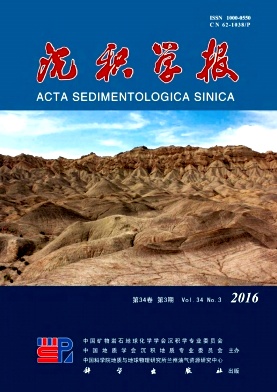Discovery and Significance of the Storm Deposit within the Lower Cambrian Qingxudong Formation in the Dingtai Area, Northwestern Guizhou
doi: 10.14027/j.cnki.cjxb.2016.03.005
- Received Date: 2015-06-15
- Rev Recd Date: 2015-10-18
- Publish Date: 2016-06-10
-
Key words:
- northwestern Guizhou /
- Dingtai section /
- Lower Cambrian /
- Qingxudong Formation /
- storm deposit
Abstract: Two sets of storm deposits, with different sedimentary characteristics, were found at the bottom and the middle of Qingxudong Formation(Lungwangmiaoan Stage, Lower Cambrian)of the Dingtai section, Zunyi, northwestern Guizhou province, which are different from the discovery of the storm deposits that were found mostly at the platform margin in eastern Hunan and western Guizhou. It was the first time that we found storm deposits at the interior of the Yangtze platform in northwestern Guizhou at the same stage. At the bottom, we found erosion surface, coarse lag deposit, hummocky-sunken cross-stratification, ripple bedding, and micrite limestone, which represents the background deposit, and we can recognize three types of storm deposit sequences, and its sedimentary characteristics indicate that it was deposited at middle ramp, between the wave base and the storm wave base. At the middle, we found coarse lag deposit, graded bedding and ripple bedding, and the background deposit is algal clast limestone which develops bird-eye structure, and there are four types of storm deposit sequences that we can recognize, and its sedimentary characteristics indicate that it was deposited at shallow water tidal flat, above the wave base. The discovery of this two sets of storm deposits, which deposited at different settings, not only enrich our understanding of storm deposit, but more impotant is that it can provide us valuable infomation for our study on the evolution of paleolatitude and paleoplate, the isochronostratigraphic correlation and the evolution of paleogeography of the Yangtze platform in the Lungwangmiaoan Stage, Lower Cambrian.
| Citation: | ZHENG BinSong, MOU ChuanLong, LIANG Wei, CHEN Chao, XU PengHui, SUN XiaoYong. Discovery and Significance of the Storm Deposit within the Lower Cambrian Qingxudong Formation in the Dingtai Area, Northwestern Guizhou[J]. Acta Sedimentologica Sinica, 2016, 34(3): 478-486. doi: 10.14027/j.cnki.cjxb.2016.03.005 |






 DownLoad:
DownLoad: